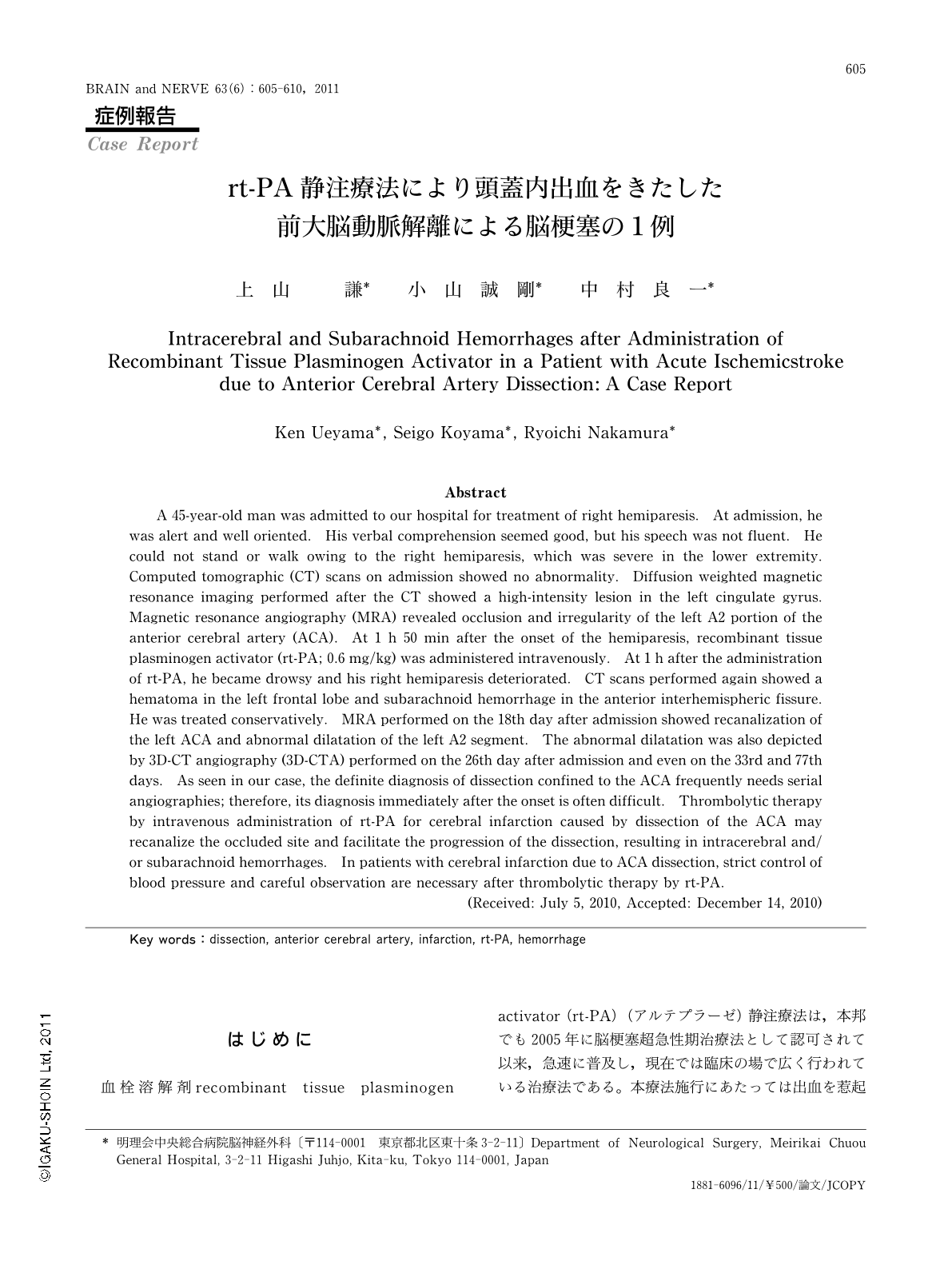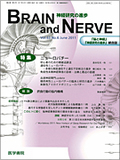Japanese
English
- 有料閲覧
- Abstract 文献概要
- 1ページ目 Look Inside
- 参考文献 Reference
はじめに
血栓溶解剤recombinant tissue plasminogen activator(rt-PA)(アルテプラーゼ)静注療法は,本邦でも2005年に脳梗塞超急性期治療法として認可されて以来,急速に普及し,現在では臨床の場で広く行われている治療法である。本療法施行にあたっては出血を惹起するような病態については禁忌あるいは慎重投与が求められるが,頭蓋内動脈解離に起因した脳梗塞に対するrt-PA静注療法の適応については,十分なエビデンスがなく,『脳卒中治療ガイドライン2009』1)でも明確な指針は示されていない。
今回,前大脳動脈領域の脳梗塞で発症し,rt-PA静注療法を行ったところ,rt-PA投与後に頭蓋内出血をきたし,その後の検査で前大脳動脈解離の診断が得られた1例を経験した。虚血発症の動脈解離は本療法における危険なピットフォールとなる可能性があり,急速に広まりつつある本療法に対する警鐘として報告する。
Abstract
A 45-year-old man was admitted to our hospital for treatment of right hemiparesis. At admission, he was alert and well oriented. His verbal comprehension seemed good, but his speech was not fluent. He could not stand or walk owing to the right hemiparesis, which was severe in the lower extremity. Computed tomographic (CT) scans on admission showed no abnormality. Diffusion weighted magnetic resonance imaging performed after the CT showed a high-intensity lesion in the left cingulate gyrus. Magnetic resonance angiography (MRA) revealed occlusion and irregularity of the left A2 portion of the anterior cerebral artery (ACA). At 1 h 50 min after the onset of the hemiparesis, recombinant tissue plasminogen activator (rt-PA; 0.6 mg/kg) was administered intravenously. At 1 h after the administration of rt-PA, he became drowsy and his right hemiparesis deteriorated. CT scans performed again showed a hematoma in the left frontal lobe and subarachnoid hemorrhage in the anterior interhemispheric fissure. He was treated conservatively. MRA performed on the 18th day after admission showed recanalization of the left ACA and abnormal dilatation of the left A2 segment. The abnormal dilatation was also depicted by 3D-CT angiography (3D-CTA) performed on the 26th day after admission and even on the 33rd and 77th days. As seen in our case, the definite diagnosis of dissection confined to the ACA frequently needs serial angiographies; therefore, its diagnosis immediately after the onset is often difficult. Thrombolytic therapy by intravenous administration of rt-PA for cerebral infarction caused by dissection of the ACA may recanalize the occluded site and facilitate the progression of the dissection, resulting in intracerebral and/or subarachnoid hemorrhages. In patients with cerebral infarction due to ACA dissection, strict control of blood pressure and careful observation are necessary after thrombolytic therapy by rt-PA.
(Received: July 5,2010,Accepted: December 14,2010)

Copyright © 2011, Igaku-Shoin Ltd. All rights reserved.


